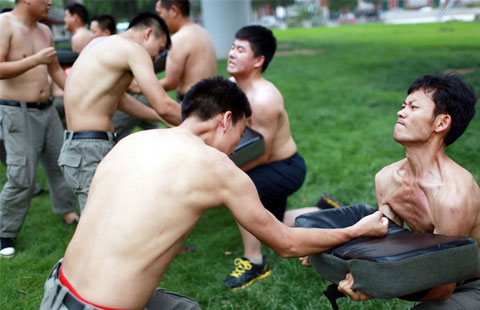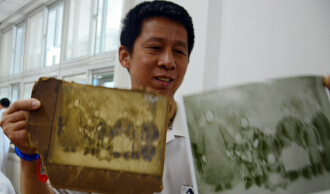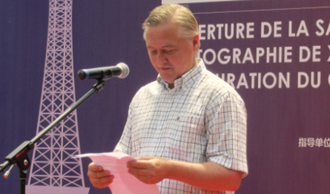Smog plan launched in Delta provinces
By Wang Zhenghua in Shanghai ( China Daily ) Updated: 2014-01-09 01:14:25After months of anticipation, authorities in Shanghai and Jiangsu, Zhejiang and Anhui provinces, as well as eight ministry-level agencies, have launched a coordinated mechanism to fight and control air pollution in the region.
The new mechanism covering the Yangtze River Delta was announced in Shanghai on Tuesday during its first work conference.
Under the framework, the four areas will work together to push forward the State Council's policies on air pollution control, study the challenges faced by the region, and report to each other on air quality and the progress they make in their own areas.
The four areas also vowed on Tuesday to unify their standards on energy saving efforts, emissions and the phasing out of outdated production capacity. They agreed to jointly enforce environmental laws and regulations, while strengthening scientific research in the sector.
The move came after Shanghai and some major cities in Zhejiang and Jiangsu were hit hard by unprecedented levels of air pollution last month.
Leaders in the six provinces and provincial-level cities and regions of Beijing, Tianjin, Hebei, Shanxi, Shandong, and the Inner Mongolia autonomous region met in October to seek solutions to the worsening air pollution in the region.
The Pearl River Delta region in the south is also considering the creation of such a working mechanism.
Yang Xin, professor at Fudan University's department of environmental science and engineering, said the mechanism in the Yangtze River Delta region is important because it spans different administrative authorities and will play a major role in the region's efforts to fight and control air pollution.
"Unlike the Pearl River Delta region, which consists mainly of cities in Guangdong province, the Yangtze River Delta region involves three provinces and a municipality, and a mechanism covering so many different areas is a real breakthrough," he added.
Scientific studies have demonstrated that pollutants generated in one area can be delivered to other areas in the same region, and regional authorities won't succeed in fighting pollution by making individual efforts alone, he said.
Another highlight of the new coordinated efforts is the involvement of eight ministry-level agencies, including the National Development and Reform Commission, the Ministry of Transport, and the Ministry of Environmental Protection.
"To tackle the air pollution, different departments will be involved in improving energy and industrial structures, or will embark on other effective initiatives," Yang said.
Fu Qingyan, chief engineer at Shanghai Environmental Monitoring Center, said studies from the center show that air pollution is increasingly affecting the region as a whole, rather than just individual cities.
According to a work plan discussed at Tuesday's conference, authorities in Shanghai, Jiangsu, Zhejiang and Anhui will focus their efforts in 10 areas.
These include the control of coal consumption, replacing small polluting boilers with electricity-powered ones, strictly regulating overcapacity and promoting vehicles that use clean energies.
One priority in Shanghai is the elimination of small boilers that cause air pollution, authorities have said. The city has demanded that by the end of 2015, all small boilers in Shanghai to be replaced by clean-energy models.
By last month, the city had modified about 200 boilers, with an estimated 143,000-metric-ton reduction in carbon dioxide emissions, said Wang Lu, deputy general manager of Shanghai Municipal Electric Power Company.
In 2012, Shanghai consumed about 51 million tons of coal, with 10 million tons used by small boilers in the industrial sector.
The city has vowed to lower the concentration level of PM2.5, a main air pollutant, by 20 percent over the next five years.
wangzhenghua@chinadaily.com.cn
- Up to 500,000 die annually from China smog: report
- University unveils new air purifier technology
- In 'piles of scrap', Nanjing drivers spot opportunity
- Purifier makers must remove cloud of doubt over quality
- Shanxi plan tackles air pollution
- Beijing's smog mainly caused by industrial pollution
- Chinese city bans polluting fireworks
- Smoggy days set records in Chinese cities
- 805 companies face punishment for pollution
|
|
|
|
|
|
|
|


















 Op Rana
Op Rana Berlin Fang
Berlin Fang Zhu Yuan
Zhu Yuan Huang Xiangyang
Huang Xiangyang Chen Weihua
Chen Weihua Liu Shinan
Liu Shinan